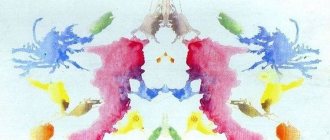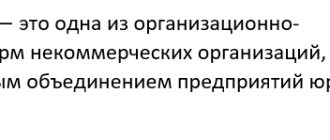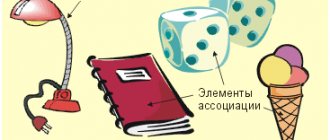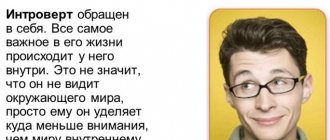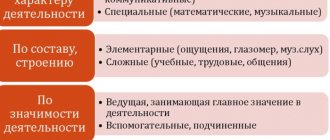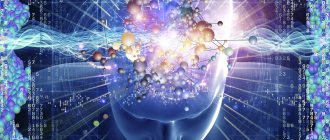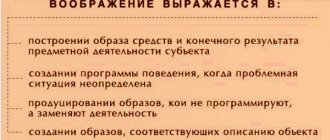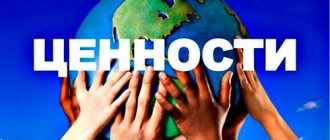The famous Italian writer Gianni Rodari compared the spoken word to a stone thrown into a pond. The circles diverging from it not only stirred up the water, they made completely unrelated objects move in the same rhythm: an autumn leaf on the water, a reed, a fisherman’s float, a water lily. The word we hear causes similar waves. Only these are waves of excitation diverging in the cerebral cortex. They involve thoughts, images, memories into movement. This is the process of the birth of associations, which play a very important role in the human psyche.
Associations from a psychological point of view
The concept of “association” was introduced by the English philosopher of the 17th century J. Locke, but the phenomenon itself has been known since Antiquity and was described by Plato and Aristotle.
Association as connection
Communication is how this concept is translated from Latin. It has many meanings, but in psychology this term refers to a spontaneous connection that occurs in the human brain between objects, phenomena of reality, memories and imaginary images. That is, such connections are caused by both external stimuli (words, smells, visual images, sounds, etc.) and information stored in memory.
The stimulus for the emergence of associations can also be internal processes in our organs. For example, heaviness in the stomach and heartburn instantly cause an association with a piece of fried fatty meat eaten at lunch.
Even your own thoughts can literally provoke a fan of associations. I think each of us has found ourselves in a situation where some random thought pulled out from the depths of our consciousness another thought that seemed unrelated to it. And that, in turn, grabbed a third, a fourth... And after some time we asked ourselves in surprise how our thoughts got here, why suddenly seemingly long-forgotten images were spinning in our heads.
Psychophysiological mechanism of associations
The basis of associations is a conditioned reflex reaction. Any sufficiently strong stimulus (word, image, smell, sound, thought) causes a focus of excitation in the cerebral cortex. This excitation along the nerve fibers from one neuron to another spreads in breadth and depth. Waves of excitation also capture new areas of the cortex, activate traces of previous foci of excitation, and evoke images, feelings, and ideas from memory. They are included in the thinking process and update new and new images.
The famous English creativity researcher T. Buzan compared associative thinking with fireworks. First, one sparkle-thought takes off, which explodes into dozens of new ones, and they, in turn, scatter in a fan of fiery splashes, covering the entire sky with a shining ball.
The process of creating associations is very important for the normal functioning of consciousness, for the effectiveness of our thinking and depends on the following factors:
- The speed of nervous processes, which also determines the speed of reflex reactions. This means the time and area of propagation of the nerve impulse. The higher the speed, the faster and more diverse associations arise.
- Memory and information stored in it. The more extensive and varied our knowledge, the richer the associations and, accordingly, the more original the products of thinking.
- Imagination. In the process of birth of associations, emerging images can be processed, transformed, and their elements can be combined in new combinations. This is how the imagination works, and the new images it creates enrich our memory and participate in thinking.
- The area of the subconscious. Associative processes, which are based on the spontaneous spread of excitation in the cerebral cortex, spreading deeper, connect the level of the subconscious to thinking. Since a huge amount of information that we are not conscious of is stored there, and there is no targeted access to it, associations are one of the few channels of communication with this mysterious level of the psyche.
Associations are individual in nature, as they are associated with experience and information stored in a person’s memory. However, there are also stable connections that are inherent in many people due to their common experience, interests, professional activities, etc. There is an interesting example or a kind of test. What association do you have with the word “undead”? Some people associate this concept with a gentle, affectionate attitude. And for those who are fond of books and films in the genre of mysticism and fantasy - with terrible supernatural creatures. There are even more universal associations, for example, snow in people’s minds is associated with winter, heat with summer, falling leaves with autumn.
Methods of associative search for ideas
Focal object method
If the characteristics of other, randomly selected objects are transferred to the object being improved, the number of unexpected solution options will sharply increase. This idea served as the basis for a method for activating creativity, proposed in 1926 by Berlin University professor F. Kunze (catalogue method) and improved in the 50s by the American inventor Charles Whiting (focal object method).
The focal object method gives good results when searching for new modifications of known methods and devices. In addition, it can be used to train the imagination (exercises like: imagine a fantastic animal, plant, ship, etc.).
The essence of the method is to transfer the characteristics of randomly selected objects to the object being improved, which lies, as it were, in the focus of transfer.
The focal object method is applied in the following order:
- Selecting a focal object (for example, a watch).
- Selection of three or four random objects (they are taken at random from a dictionary, catalog, technical magazine, etc. For example, cinema, snake, cash register, pole).
- Compiling lists of attributes of random objects (for example, cinema: widescreen, sound, color, volumetric, etc.).
- Generating ideas by attaching features of random objects to a focal object (e.g., widescreen clock, audio clock, volumetric clock, etc.).
- Development of the resulting combinations through free associations (for example, a wide-screen watch: instead of a narrow dial, a wide one is taken; there may be a narrow dial, which is sometimes stretched wide, projected somewhere... etc.).
- Evaluating the ideas received and selecting useful solutions (it is advisable to entrust the evaluation to an expert or group of experts, and then jointly select the necessary solutions).
Adobe Instagram - a selection of works that can surprise you
Method “Garland of Associations and Metaphors”
G. Ya Bush in the book “Dialogue and Creativity” offers a creative technique, which he called “Garland of Associations”. Its goal is to facilitate the search for a solution when there is a lack of information. The use of chains (garlands) of associations and metaphors allows you to make a transition to a new area of knowledge and interpret various aspects of the problem in a new way. In this case, the associative memory of the person searching for solutions acts as a kind of information fund.
Stages of the “garlands of associations” method
1. Determination of synonyms of an object and the formation of the first garland from them - a garland of synonyms.
2.Random selection of random objects. Completely arbitrarily, in any way, for example, from memory or from an encyclopedic dictionary, several nouns are chosen, which do not necessarily have to denote even technical objects. From the selected words they form a second garland - a garland of random objects.
3. Making combinations of elements of a garland of synonyms and a garland of random objects. The combination is made up of two elements by connecting sequentially each synonym of the object in question with each random object.
4. Compiling a list of characteristics of random objects. Their signs are determined. In this case, it is necessary to determine the largest possible number of signs within a limited time, for example, in two to three minutes. The success of the search largely depends on the breadth of coverage of features of random objects. It is therefore advisable to list both the main and secondary, insignificant features. For convenience, you can create a table of characteristics.
5. Generating ideas by alternately attaching features of randomly selected objects to the original object and its synonyms. Similarly, a list of new constructions is formed, obtained by alternately attaching synonyms of attributes of other random objects to the garland.
6. Generating garlands of associations. From the characteristics of random objects identified in the fourth step, garlands of free associations are generated. For each individual feature, garlands can be of practically unlimited length, so generation should be limited in time or by the number of elements of the garland. If the generation of a garland of associations is carried out in a team, then each of its members does this independently.
7. Generating new ideas. They alternately try to attach elements of the garlands of associations to the elements of the garland of synonyms of the original object. At this step, the question is decided whether among the combinations of synonyms of the original object with elements of garlands of associations there is a sufficient number of original and tempting ideas. If, according to a preliminary assessment, there are few such ideas, you can continue to form garlands of associations, starting with some new element of the garlands created in the sixth step.
8. Evaluation and selection of rational options for ideas. Generating new options for solving problems at previous steps usually gives a fairly large set of options. Among the many irrational, trivial and even ridiculous ideas, as a rule, there will always be original and rational ones. It is recommended to select options in several stages. First, obviously irrational options are crossed out, then original ones of dubious usefulness are selected, but are attractive due to their unexpectedness. It is advisable to study the list of such options with the involvement of experts or a creative team. The list of rational solutions includes options that best meet the goals and production requirements.
9. The selection of the best option from rational ones is carried out in different ways. The method of expert assessments is very simple and effective.
Types of associations
The first known classification of associations was created by Aristotle, and we still use it. The ancient philosopher identified three types of connections:
- By similarity. In order for this connection to arise between two objects or phenomena in the human brain, they must be similar in some way: appearance, color, emotional impact, etc. Thus, the number 2 is associated with a goose, the sky with the ocean , and a snowy plain with a white sheet.
- By contiguity. This common type of connection occurs when we frequently perceive some objects at the same time. For example, the smell of pies can cause an association with home, with childhood, with an affectionate grandmother; the sound of the surf means happy holidays, and the aroma of tangerines and pine needles means happy New Year. This type also includes verbal associations born from set expressions. For example, in response to the word “willow”, many people will think of “weeping”, birch - white-trunked, oak - mighty, etc. But an association by contiguity can also reflect the presence of a real connection or interaction between objects. Thus, a hat is associated with the head, a cart with a horse, and the moon with the night.
- By contrast. This is the most complex type of association, difficult to explain. The image that appears in the mind causes an association with its opposite in meaning. So, if you say the word “day,” most people will remember night. Summer - winter, heat - cold. Such associations are the source of interesting vivid metaphors, for example comparing snowflakes to sparks.
Later, Aristotle's classification was supplemented by one more type. Associations by meaning are the result of the analysis of information and the emergence of complex logical and semantic connections in the human brain. They are largely individual and determined by personal experience, but there are also ones that are understandable to most people. For example, rain means a runny nose, the sea means an airplane. It is not difficult to establish a semantic connection between them.
Psychodiagnostic methods using associations
Since the beginning of the 20th century, connections spontaneously arising in the cerebral cortex have been used by psychologists to diagnose human mental states. S. Freud was the first to draw attention to the connection between free associations and processes occurring at the level of the unconscious. According to his theory, at this deep level of the psyche there are instincts and desires suppressed by a person, which contradict the requirements of society.
But having driven these forbidden desires into the far corner of the unconscious, a person did not get rid of them. They continue to influence his behavior, provoke phobias or strange behavior, and even cause mental disorders and organic diseases.
Free association method
Associations that arise involuntarily carry information about these suppressed desires and instincts, which allows a psychologist or psychiatrist to make a diagnosis. For this, S. Freud developed and began to use the method of free association, which to this day is one of the main ones in psychoanalysis.
The principle of this method is very simple. Having assumed a comfortable position and relaxed, the patient should simply say whatever comes to his mind. He can talk about his problems, or he can simply reflect on the meaning of life or discuss his colleagues. You need not to control, not to analyze, not to choose the right words, but to speak freely.
The patient’s thoughts and words themselves evoke different associations in his mind, generating a new stream of speech activity and pulling out from the unconscious what is hidden there and interferes with life. But the psychoanalyst must recognize the connection between individual phrases, words, and reservations of the patient and his psychological problems and complexes, identify these problems and reveal their essence to the client.
Variety of association methods
Currently, associative thinking is used in many psychodiagnostic techniques that make it possible to study the characteristics of an individual’s mental state, his problems, experiences and attitude towards others. Unlike Freud and his followers, representatives of other psychological movements prefer to use not free associations, but more organized and controlled by a psychotherapist. The methods are developed in such a way as to not only stimulate the emergence of associations, but also to be able to statistically process the results and compare them with data from other clients. All such diagnostic methods can be divided into three groups of tests:
- Based on verbal associations. In such tests, subjects are presented with a series of words or phrases, in response to which they must say the first thing that comes to mind. The very formulation, meaning, and scope of use of phrases are designed to reveal the internal problems of the person being diagnosed. One of the most popular such techniques is the “Paired Associations” test.
- Based on visual associations. Looking at the proposed pictures, often abstract, the client must say what they remind him of. The most famous of these techniques are the Rorschach Ink Blot Test and metaphorical cards.
- Based on the analysis of creative products. In order to study unconscious associations, the diagnosed person is asked to complete a creative task, for example, write an essay on a given topic or draw something. The creative process frees thinking and connects the subconscious to the process, which facilitates the birth of associations and opens access to archetype images, hidden desires and poorly understood problems.
Associative thinking is not only a source of important information about a person, it is a necessary condition for the intellectual and creative development of the individual.
Associations in thinking and creativity
Cognitive processes in general have a lot to do with associations. For example, our memory. It is the emergence of a connection between newly received information and what is stored in the brain that ensures quick and easy memorization. The greater the volume of a person’s knowledge, the more diverse associations arise and the more effective the memorization process.
The associative nature of thinking provides the ability to connect information from many areas of life and stored at different levels of consciousness to solving problems. The rapid emergence of connections between images, concepts, and thoughts makes the imagination free and easy, and the emerging ideas become original and non-standard.
Obviously, the creative process presupposes the presence of developed associative thinking. One of its features is that this thinking works, as it were, bypassing logic. After all, associations arise spontaneously and do not require building complex logical chains of cause-and-effect relationships. Often the associations that arise seem illogical, but they have a deep meaning and allow you to see workarounds in solving the most difficult problems.
Now psychologists have developed many methods and trainings for the development of associative thinking, as well as techniques that allow you to learn how to manage the process of creating associations, make it conscious and include it in the creative process.
Features of associative thinking
It has been established that the number of direct associative connections of any concept (word) is on average about ten. One associative step allows you to choose from 10 words, the second - from 102, the third - from 103, the fourth - from 105. Thus, each step increases by an order of magnitude the number of connections of a given concept with other concepts according to certain characteristics, which significantly expands the possibilities selection of solution ideas.
A feature of associative thinking is the ability to identify common features of things - to generalize without conducting logical analysis. Associations can be seen as a source of additional information that can be used in the creative process.
Associations are capable of “pulling out” from the recesses of our consciousness the most diverse, often quite unexpected, memories, images, thoughts, which significantly expand the area of creative search.
Methods of associative search for ideas are good, for example, when creating the plot of an advertising video. Unexpected elements attract attention and make people focus on the advertisement. You can search for associations using visual images. In Google, Flickr, Pinterest, search for the word of interest. The result is an expansion of the range of creative solutions and inspiration for their development.
